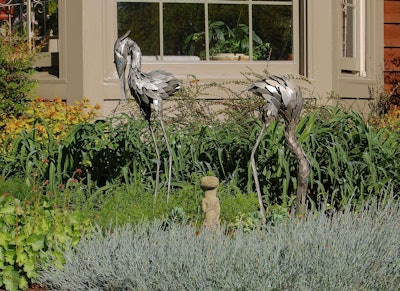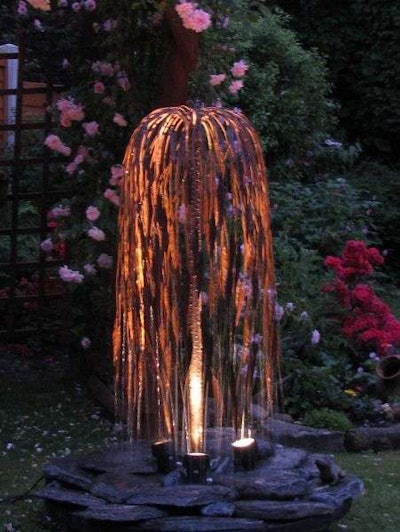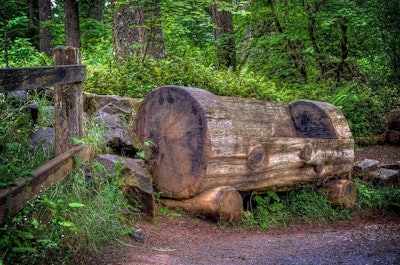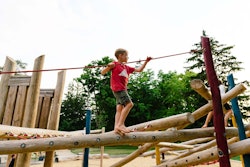 These metal crane sculptures are able to enhance the natural feel of the space.
These metal crane sculptures are able to enhance the natural feel of the space.Photo: Mark Levisay/Flickr
Art is an opportunity for individuals to express themselves, whether they are making it or displaying it, and the visual representation of creativity can add a special energy to a space.
While most people stick to placing art on their walls indoors, it can also function quite well in a landscape.
Depending on your client and the space you're working with, the art pieces can be functional as well as eye-catching.
Sculpture
The most obvious example of art in the garden is sculpture. These shapes can be abstract or realistic and they can serve as focal points or complementary features within the landscape. The materials of sculptures can vary from wood to metal to concrete to glass.
Some can invoke the whimsical feel of a place, while others may suggest a quiet reverence. Choosing the proper piece and the right location will require close collaboration with your clients.
Walls
 During night and day this weeping willow water feature is the center of the show.
During night and day this weeping willow water feature is the center of the show.Photo: water-garden.co.uk
Walls and fences can create private spaces, but they can also serve as a place to hang artwork or even as a “canvas” for a mural. Fences themselves can feature intricate ironwork. Plain wooden fences can be dressed up with decorative paneling.
Living walls can also become quite artistic if the plants are grown in specific patterns.
Water features
The variety of water features is limitless. Traditional tiered birdbaths, urns, or obelisks can all function as art pieces, providing sounds in the garden as well.
Some water features can also work as sculptures – a copper weeping willow, for example, with water trickling down its leaves.
Stones
Hardscaping with intriguing mosaic patterns, standing stones in strategic locations, or raking gravel in Zen gardens are all ways to use rocks for art.
Stacked stones or dry stone sculptures can be fascinating due to the enigmatic quality that results from using a natural material to create shapes not found in nature. Devine Escapes is just one of the companies that make these intriguing constructions.
 Birdhouses provide easy pops of color that can be quickly changed with a new coat of paint.
Birdhouses provide easy pops of color that can be quickly changed with a new coat of paint.Photo: njenney/Flickr
Birdhouses
For clients who love art and animals, birdhouses are quaint little additions that can serve both purposes. While there is the simplistic roof, walls, and entry hole, the decoration and painting of birdhouses can become quite the talking point for some.
Also, their residents can brighten up any backyard with colorful plumage and song.
Benches
Another functional feature that can be crafted into a creative object, benches can do more than provide seating. Depending on the design, they can pay homage to the customer’s interests or make use of the theme of the space.
Because it will stand out more than mundane seating, a specially designed bench will become a more obvious destination for those moving through the garden.
 This bench carved from a fallen tree fit right in with its surroundings and provides and earthy vibe.
This bench carved from a fallen tree fit right in with its surroundings and provides and earthy vibe.Photo: PhotoAtelier/Flickr









